2016
CREC Weed Arboretum – Resource available for weed identification
The first step in weed management is plant identification. Pictures or dried plant mounts are useful but live plants grown in a natural environment are ideal tools for teaching agricultural audiences. The CREC has a weed arboretum (living weed exhibit) available as a resource for informal or formal weed identification.
The weed arboretum contains about 60 weeds arranged in groups including North Dakota noxious weeds, perennials, biennials, annual or winter annual grasses, annual broadleaves and winter annual broadleaves. Individuals or groups are invited to visit the display anytime, with best viewing now through July.
CREC educational events planned for this summer that include formal weed identification sessions using the weed arboretum:
- North Dakota Weed Control Association Sprayer Clinic (May 24) – see picture
- Crop Management Field School (June 16)
- Bismarck State College and ND State College of Science ag student field lab (July 21)

Greg Endres
Area Agronomy Specialist
Getting Ready for Irrigation Scheduling: A quick overview
With an exceptionally dry winter behind us we are looking at a season in which irrigation is likely to bring a good return on investment. As anybody who schedules irrigation knows, the trick to getting the most benefit comes down to first timing and second to putting out the proper amount. The goal is to prevent yield loss from drought stress while avoiding wasteful application of irrigation water. Unfortunately, by the time crop stress becomes visible, yield has already been affected. So in order to make the best of irrigation one has to make the decision to irrigate based on monitoring or estimating how much water is available to the plants.
Here is a quick overview of the three main factors one needs to consider before making the decision to irrigate:
- Plant available water holding capacity for your soil in the effective root zone. (depends on crop): This tells you how much water is available to plants at field capacity. One can get a good estimate of it based on soil texture (https://www.ag.ndsu.edu/pubs/ageng/irrigate/ae1675.pdf). Most county soil surveys also give that information listed as “available water capacity” in the data table named “physical and chemical properties of soil”. There are also in-situ and laboratory methods that can be used for greater accuracy.
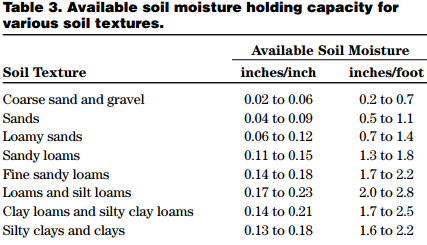
Figure 1. NDSU Extension Service Publication: Soil, Water and Plant Charcteristics Important to Irrigation (2013) Revised by Thomas F. Scherer, David Franzen and Larry Cihacek - Actual amount of plant available water (PAW) in the soil: there are several ways to monitor this. Two of the more affordable, simpler methods are the feel method and the checkbook method, which are especially effective when used in conjunction with each other.
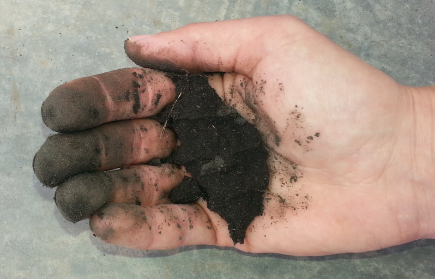
With a bit of practice, soil moisture content can be determined pretty accurately. Here is a picture guide to that method from the USDA: http://www.nrcs.usda.gov/Internet/FSE_DOCUMENTS/nrcs144p2_051845.pdf. To use it, one must first know the soil texture of each depth sampled.
The checkbook method involves calculating crop water use based on weather data and monitoring precipitation on a daily basis. The grower must first determine the amount of plant available water at the beginning of the monitoring period. Then the crop water use would have to be subtracted from the plant available water of the previous day, consequently irrigation and precipitation water would be registered as increases in PAW. Here is a detailed guide from NDSU on how to do that: https://www.ag.ndsu.edu/irrigation/documents/AE-792.pdf. Thankfully, in North Dakota our job is made a little easier by the North Dakota Agricultural Weather Network (NDAWN) service which offers crop water use calculations online for 10 different field crops based on weather data. The user must only specify the area, the crop and the date of emergence to get daily values of crop water use. PAW can also be monitored with other methods, for example by using electric sensors, tensiometers, or by using a neutron probe.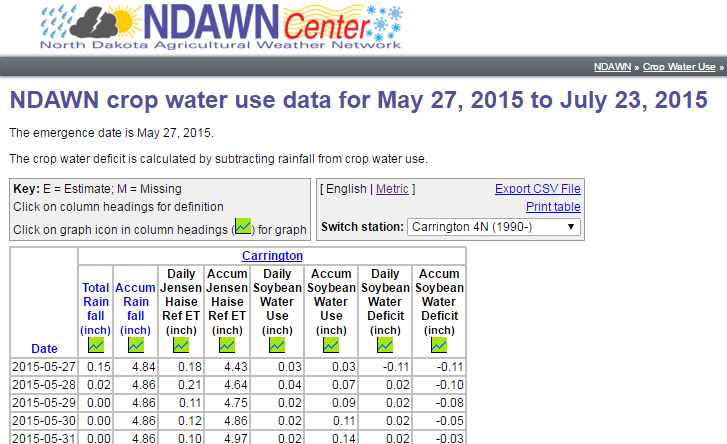
- Management allowable depletion: Once we know how much water is available to our crop, the decision to irrigate comes down to crop water needs and economics. Irrigation is costly and the capacity to irrigate may be limited. A certain amount of PAW can be allowed to be depleted before irrigating up to field capacity without causing yield loss. Usually this is around 40-50 % PAW depending on crop and soil texture. If water is limited during the season, then one should prioritize irrigation during the more sensitive growth stages, usually the reproductive stage, and allow for some level of water stress during the less sensitive periods when yield is less likely to be affected.
Szilvia Yuja
Agronomy Research Specialist
Long-term Cropping Study – Tillage Systems
In 1987, a long-term cropping systems study started at the NDSU Carrington Research Extension Center. Three sets of 4-year crop rotations are replicated three times each year. The eighth cycle ended in 2015. The rotations and fertilizer treatments can be found here: https://www.ag.ndsu.edu/CarringtonREC/center-points/long-term-cropping-systems-study and the economics of the system can be found here: https://www.ag.ndsu.edu/CarringtonREC/center-points/economics-of-a-long-term-cropping-system-at-the-carrington-rec. In this blog, we’re going to discuss the tillage systems. This study is located on a Heimdal silt loam soil. The main plots are 180 ft. by 300 ft. so field scale equipment is used.
The conventional tillage system starts with disking to a depth of approximately three inches shortly after combining for weed control and to foster germination of volunteer grain. This is followed by chisel plowing later in the fall for weed control, to kill volunteer grain, and to create ridges to reduce wind erosion and to try to catch snow. In the spring, the ground is worked with a field cultivator prior to seeding or planting again for weed control and to prepare an appropriate seedbed for this treatment.
The minimum tillage has become more of a rotational tillage system. The minimum tillage system used to consist of chisel plowing in the fall followed by prepping in the spring with a field cultivator prior to seeding. It was changed to reflect current reduced tillage farming practices of the area. This is based on newer equipment that has reduced tillage and no-till capabilities. It is essentially not tilled except for the fall prior to the corn and sunflower rotations. That fall and the following spring it is worked just like the previously mentioned conventional tillage treatment. This is to help warm up the soil faster in our short growing seasons to give those crops as long of growing season as possible to try and capture as much yield as permitted by the growing season.
The no-till treatment is just as it sounds, there is no tillage performed except what disturbance is created by the disk drill or planter. Instead of tillage, a chemical burn down with herbicides is performed in the fall for weed control after combining and again in the spring for weed control prior to seeding. The no-till system greatly reduces soil erosion compared to the conventional tillage system. Also, it does not incorporate the crop residues into the soil like the conventional tillage system. Soil microbes use warm summer temperatures and moisture to grow their populations, thereby breaking down residues into organic matter. By reducing disturbance, the soil is able to build organic matter when the crop residues are broken down by soil microbes. Over time, this results in more plant available nutrients. This increase in soil organic matter allows for greater water infiltration due to the increased size and number of pores in the soil created from not disrupting its formation with tillage. Increased pore space also allows for more water holding capacity which can be used by the crop in times of moisture stress.
For every tillage system, appropriate herbicides are used for weed control within crop. Following are photos showing what a few of the tillage systems and various crops looked like early last week after seeding.
In these photos taken 5/9/16 you can see what the tillage systems look like after seeding. Conventional tillage is on the left and the no-till on the right. Top row: Corn (previous crop: Field Pea). Second row: HRSW (previous crop: Soybean). Third row: Field Pea (previous crop: HRSW). Forth row: Barley (previous crop: Sunflower).
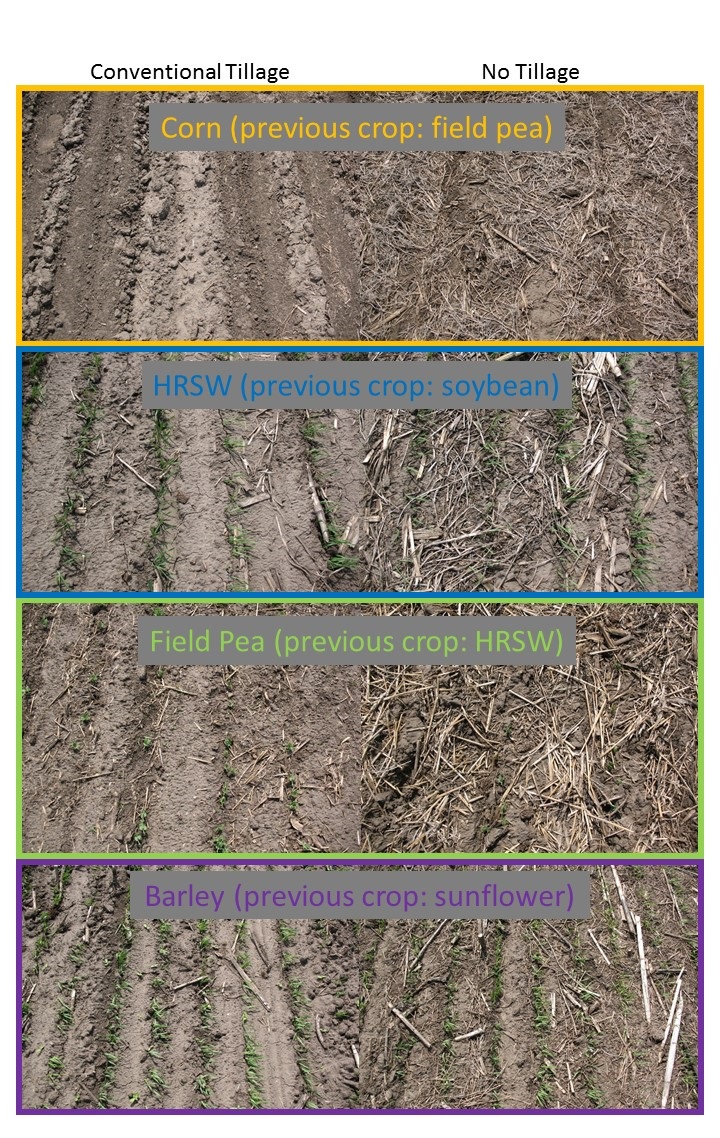
The goal of the study is to determine the effects of tillage system, N fertility level and source, and crop rotation and the combination of these parameters have on crop grain and biomass production, crop diseases, soil nitrogen, soil phosphorous, soil organic matter, and soil pH.
I will be providing more updates as the season progresses.
Ezra Aberle
Agronomy Research Specialist
Synchronizing Heifers: It will soon be breeding time!
Synchronization protocols are preferred when using artificial insemination (AI). The benefit of AI is being able to breed a large number of heifers to high accuracy calving ease bulls that sire calves that grow well. Synchronization can set up the heifers for timed AI where all heifers are inseminated within a few hours. Theoretically, with timed AI the calving date would be the same day but calving can range from a week before or after the due date.
Synchronization protocols vary but all use a combination of hormones to invoke estrus (heat). These protocols are considered either short-term protocols starting at 7 to 9 days before AI or long-term protocols which start 33-36 days before AI. These protocols use progesterone as either a ‘CIDR’ vaginal insert or as ‘MGA’ provided via the feed.
The progesterone prevents the animal from coming into heat until the progesterone source is removed. If the progesterone source (either CIDR or MGA) is inadvertently removed before the scheduled removal date, the heifer will come into heat early and create a synchronization protocol that fails. Also, this early heat may not be a fertile heat.
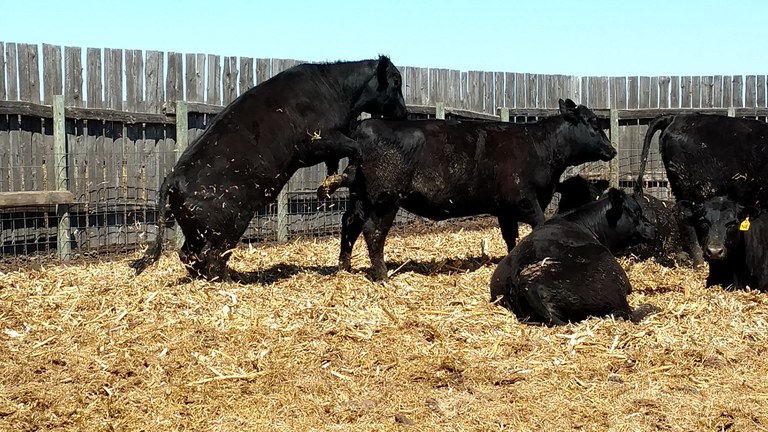
Heifers showing signs of estrus (heat).
The short term ‘7-day CO-Synch + CIDR‘ protocol starts with insertion of a CIDR and an injection of GnRH (gonadotrophin releasing hormone) on day 0. On day 7, the CIDR is removed and an injection of Prostaglandin F2 alpha is given. At 54 hours later, all heifers are injected with GnRH and artificially inseminated. Protocol length: 9 days.
The long term ‘MGA-PG’ protocol starts with suppressing estrus by feeding MGA at the rate identified on the manufacturer’s label for 14 days. At 19 days after MGA removal from the ration, an injection of Prostaglandin F2 alpha is given. At 72 hours later, all heifers are injected with GnRH and artificially inseminated. Protocol length: 33 days.
The CIDR can be used in long term protocols instead of MGA. When heifers are bred on pasture, the CIDR is usually easier to manage.
The CIDR and drugs will need to be purchased at a veterinary clinic or supply store while the MGA is purchased from a feed manufacturer.
The National Beef Reproductive Task Force has webpages that describe additional synchronization techniques for heifers and cows at:
http://beefrepro.unl.edu/resources.html
http://beefrepro.unl.edu/pdfs/2016MF2573.pdf
http://beefrepro.unl.edu/pdfs/synctips.pdf
Helpful diagrams are also available here:
http://beefrepro.unl.edu/pdfs/Protocols%20for%20Sire%20Directories%202016.pdf
While a 100% conception rate due to synchronization and AI is desired, the reality is that 60-65% conception to AI is excellent with 50% conception not unrealistic. Conception rates can be 70-85% with great technique, good nutrition, careful handling, and proper timing.
Karl Hoppe
Area Extension Livestock Specialist
Windbreaks are Multi-Functional Resources
They do more than slow the wind!
The past few weeks have brought much-needed moisture to North Dakota and it’s easy to forget about the recent threat of drought and images of blowing topsoil. North Dakota has a rich history of planting windbreaks, or shelterbelts, with hundreds of thousands of trees planted across 55,000 miles of our prairie state. Many of those plantings are in decline – trees don’t last forever. As an option to simply removing declining rows of trees, consider renovation of those plantings. Why should we care about investing in this resource?
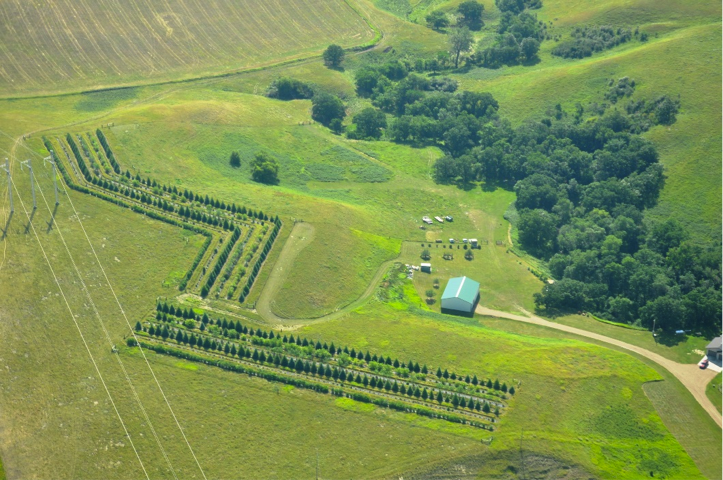
Photo by Aaron Bergdahl, NDFS, 2014
- Protection from the wind. We cannot get away from this primary function of windbreaks, which is protection from cold winter winds, hot summer winds, and blowing and drifting snow. If your home is protected by tree cover, imagine how it would be without trees. If you’ve watched your child participate in a sporting event at a sports field that’s protected by trees, imagine how different your experience would be without trees.
- Lessen the effects of heavy precipitation events. A National Climate Assessment (2014) features a map showing increased changes in very heavy precipitation. Over the last 50 years, the Midwest shows an increase of 16% in extreme rainfall events. Trees can intercept rainfall, increase the amount of rain that filters into the ground, and reduce the quantity, speed and peak flows of runoff. Tree plantings can have positive effects at a watershed scale, even if planted in narrow upland strips or along riparian areas.
- Improve income. Fields with windbreaks can net yields with increases of 10 to 20 percent, whether grain, vegetable, hay or orchard crops. Livestock that benefit from protection of winter winds show improved weight gains with lower feed costs. Heating and cooling costs for our homes are decreased with windbreaks protecting from cold northwest winds, and shade trees in the yard.
- Enhance aesthetics. Last but not least, the appearance of our North Dakota landscape is enhanced by windbreaks. One of my favorite sights each spring is a 2-row windbreak along Highway 281 in Eddy County. For one short week in May, the crabapple trees burst into blossoms of white and shades of pink, in stark contrast to the deep green spruce trees that majestically stand behind them. To me, that annual expression of beauty is proof that the long winter is finally over.
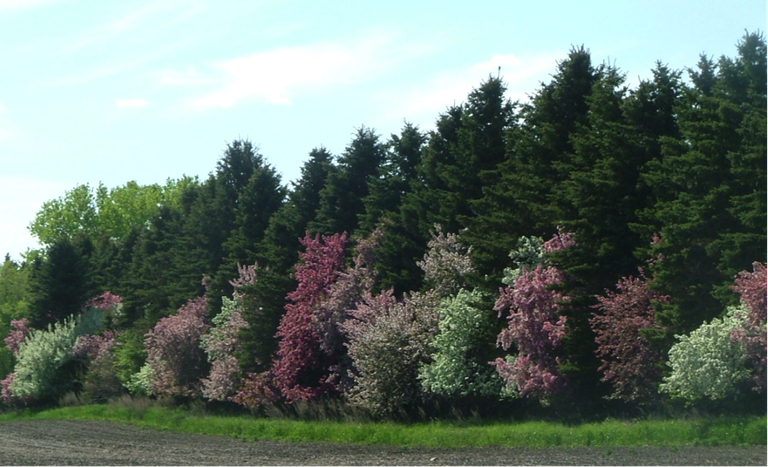
Photo by Gerri Makay, NDFS, 2013
Windbreaks don’t just take up land that could be producing income. On the contrary, well-placed and well-designed windbreaks increase yields, save energy, protect soil, air and water quality, provide wildlife habitat, and beautify the landscape. Trees don’t cost – they pay us back.
For more information, please see:
- ND Forest Service: https://www.ag.ndsu.edu/ndfs
- National Agroforestry Center, Lincoln, NE: http://nac.unl.edu/index.htm
Gerri Makay
Community Forestry Program Manager, ND Forest Service
Crop Management Field School Scheduled
The NDSU Extension Service's annual crop management field school will be offered Thursday, June 16, starting at 9 a.m. at the CREC. The school will provide updates, using hands-on training in field research and demonstration plots, on crop, pest and soil management recommendations. The targeted audience is crop advisers, but the program also will be beneficial for farmers.
Field sessions include:
- Weed identification - identify about 60 living weed exhibits, plus brief reviews of weed biology and control
- Herbicide site-of-action - identify herbicide classes by examining crop and weed injury symptoms
- Salt-affected soils - discussion will be on short- and long-term management strategies including use of cover crops
- Late-season wheat management - review of foliar and head disease control strategies with fungicides and increasing seed protein with post-flowering application of nitrogen
- Herbicide-tolerant soybean demonstration - identify post-emergence herbicides applied across soybean types based on plant injury symptoms
- Insect management update - review balance-of-season insect threats including soybean aphids
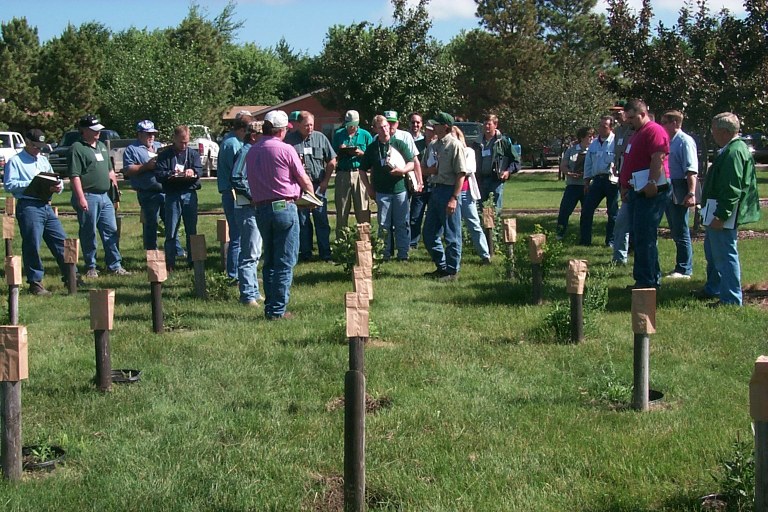
Instructors for the field school are the following Extension specialists: Greg Endres, area agronomist; Jan Knodel, entomologist; Tom Peters, sugarbeet agronomist and weed scientist; and Abbey Wick, soil health scientist. Additional instructors are Shana Forster, NDSU North Central Research Extension Center director, and Jochum Wiersma, University of Minnesota Extension Service small grain agronomist.
Preregistration is required. A total of 50 participants will be accepted on a first-come, first-served basis. Participants will receive reference materials, refreshments and a noon meal. Certified crop advisers participating in the event will receive 5.5 continuing education units.
For further details and preregistration information, go to http://www.ag.ndsu.edu/CarringtonREC/events or contact the CREC at (701) 652-2951. A completed preregistration form and $75 fee is required by June 13 ($100 after June 13).
Greg Endres
Area Agronomist
Mason Bees
The CREC is trying out mason bees, Osmia lignaria, this year, aka: blue orchard bees or orchard mason bees. These are wild bees that can easily be managed by humans. Mason bees are native to places that have the plants they need as well as the clayey-mud needed to construct the brood cells (hence masons). They are not really native to the Plains. The benefit of these bees is that they are 100-times more efficient than honeybees and require very little work to maintain. Mason bees love plants in the Rosaceae family which include most of our fruit plants. Just a handful of mason bees can pollinate an entire large apple tree in full bloom.
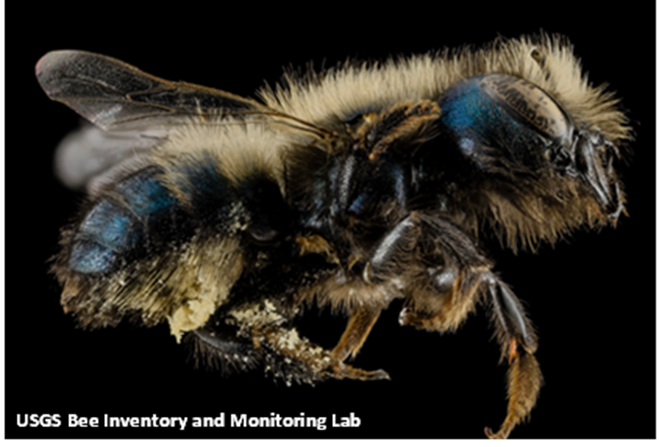
Our little bees have been waiting for this warm weather. A few weeks ago, they arrived by mail from Crown Bees in Washington. They are still hibernating in their little cocoons in the refrigerator but they are going out to the orchard as soon as something starts to bloom.
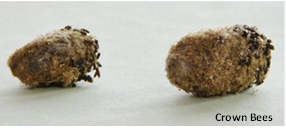
Willow pollen is one of their favorites, and this is a very important early tree to bees and birds; bees for the pollen and birds for the little insects that are drawn to the flowers.
Why would an orchard choose wild bees over honeybees? The primary reason is for their efficiency. Wild bees like mason, leafcutter and bumble bees have a goal of gathering pollen to sustain their offspring. Because of this, they are super fuzzy and aim right for the pollen when they land on a flower. Every time they land on a new flower all that pollen gets mixed around on both the bee and the flower. A honeybee’s goal is nectar; pollen structures are generally avoided and though some pollen is gathered, it is soon wetted and stuck to the bee’s hind legs. Most pollen exchange actually happens at the hive when bees touch each other!
All bees are in trouble due to loss of habitat, warming climate and insecticides (and here). Human-managed social honeybees and semi-social bumblebees can carry diseases that hurt themselves as well as transfer these diseases to wild bees via shared flowers and contact.
Wild bees like mason bees can have problems, too. They gather together but live and make their brood cells independently. We help them avoid insect pests and funguses by taking their cocoons out of the nesting material and cleaning them up each fall. It is very important to use nesting material like reeds, paper tubes and grooved wooden blocks that can be taken apart. Then the bee cocoons can wait safely in the refrigerator all winter as they get ready for next season’s work.
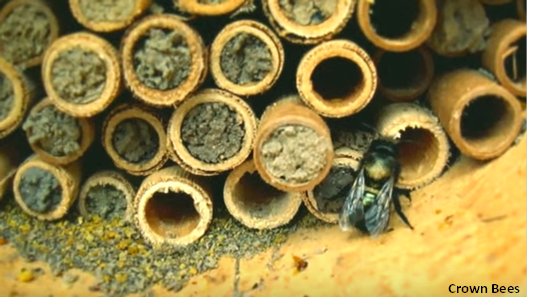
It’s a really BAD idea to use logs, blocks and bamboo that can’t be cleaned. “Bee hotels” are great in theory, but if you can’t clean the bees and structures each fall, insects and funguses build up and will eventually kill the bees.
Stay tuned to our Facebook page to see how the bees are doing this spring!
Cool insect pictures from USGS: https://www.flickr.com/photos/usgsbiml/page1
Bee news from The Xerces Society: https://www.facebook.com/bumblebcons/
Kathy Wiederholt
Fruit Project Manager
Rapid Feed Evaluation – using the in vitro gas and in situ techniques
With high feed cost, many producers incorporate alternative feedstuffs in their feeding operations with the intent of reducing the cost of finishing cattle. The state of North Dakota has loads of alternative feedstuffs that can be used by cattle producers – crop residues, co-products, by-products, unconventional grains and forages that are competitively priced.
Knowing the nutritional composition of a new feedstuff is good but it doesn’t give the whole picture of how well it will feed cattle. A feeding study with cattle is the best index of feed quality but will take a couple of weeks (or months) to shed light on the suitability of such feedstuff(s). Rapid and accurate evaluation of alternative feedstuffs can be done in vitro (in the laboratory). The in vitro gas technique can be used to evaluate the nutritive value of alternative feedstuffs in a matter of days (1-3). The in vitro gas technique mimics the natural complex microbial ecosystem of the rumen.
The process involves anaerobic incubation of feed samples in artificial saliva at 39oC using 100 ml serum vials. For ease of measuring unfermented/undigested feeds, samples are weighed into small filter bags and sealed with a sealer (see photo 1 below). To initiate fermentation, rumen fluid from cannulated animals (see photo 2) will be used to inoculate the samples. Gas released (excluding gas released from the artificial saliva) from fermenting feed samples reflects production of short chain fatty acids, which are the major source (70%) of energy for cattle. Additionally, feed samples not recovered in the filter bag after incubation are assumed to be fermented, providing estimates of the extent of digestion for various feeds. This technique ticks the right boxes like simplicity, cost, convenience and results can be extrapolated to animal response/livestock performance.

Photo 1. Supplies used for in vitro evaluation in the laboratory.
Here at the Center, the livestock unit is continuing the tradition of evaluating alternative feedstuffs with a view of identifying those that are competitively priced and have similar feeding value to conventional feedstuffs. We’ll be using the in vitro gas technique as a useful tool for rapid evaluation of different alternative feedstuffs and select those with high feeding values for animal studies.
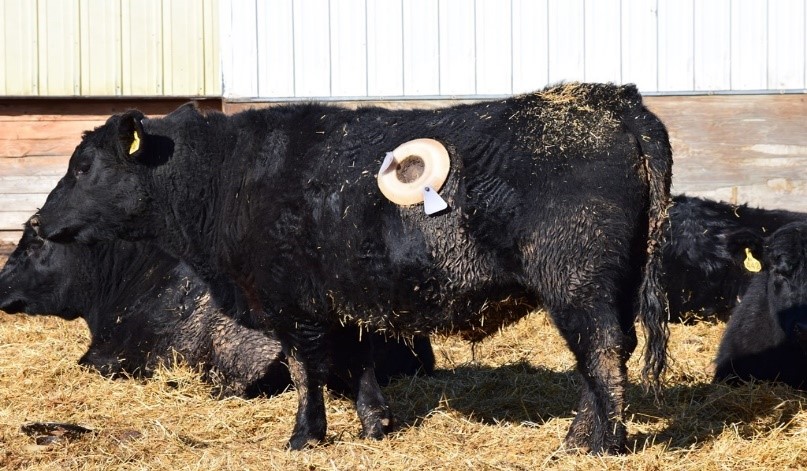
Photo 2. A cannulated steer at the CREC.
Uchenna Anele
Animal Scientist
Considerations for Phosphorus Application to Spring Wheat in North Dakota
Two approaches generally used to decide if and how much P to apply to crops vary by states.
The buildup (maintenance) approach: Being practiced in IA, IL, KS, etc., it recommends applying P and K fertilizer rates to raise the soil P to a critical level that is mostly high, and then in subsequent years, maintaining these levels by applying amounts equivalent to crop removal. The soil does not need to be sampled and be tested every year.
The sufficiency approach: Based on the concept that the amount of fertilizer to apply depends on the likelihood of crop yield response for soils testing low to medium. More frequent (annual) soil test is required. Involves building soil test to medium levels.
The sufficiency approach is more suitable in ND for a number of reasons:
- Economic: In the Northern Great Plains (NGP) where crop failure frequency (due to drought, high rainfall) is relatively high, it is important to fertilize the crop (sufficiency approach) rather than the soil. The goal is to maximize profit in the year of fertilizer application. The sufficiency approach is also more suitable for short-term lease of land.
- Agronomic: Yield potential is lower in the NGP due to short growing seasons, and soil salinity. Also, the soils have high capacity to fix P (retain P in soil in less available forms).
- Environment: The sufficiency approach is assumed to minimize phosphate losses and ground water contamination, compared to the buildup approach because of reduced risk of over-fertilization.
With short growing seasons, farmers begin planting at the earliest possible, when soil moisture and temperatures are adequate for their crop. Early season crops like wheat respond to starter P fertilizer (e.g. MAP) applied with or near the seeds, even for soils with high test P, especially in no-till, due to low soil temperatures, and slow SOM breakdown.
- Wheat: Banding or seed placement provide the most response. Apply 1/3 of the recommended broadcast P rates, which for a 40bu wheat are, 28 lbs P2O5 (low P), 17 lbs (medium), and 15 lbs (high soil test P). Never exceed 15 lbs P for high soil test P. Apply 14 lbs more P2O5 for every 10 bunch yield increase when soil test low, and about 9 lbs more for medium for every 10bu yield increase. The amount of P to band depends on the amount of N fertilizer used in banding.
- For corn, at 100bu apply 46 lbs P2O5 (low P), 28 lbs (medium P), and 8 lbs (high soil P). Increase P2O5 by about 26 lbs for every 50bu increase in low P, and 9 lbs P2O5 for medium P.
https://www.ndsu.edu/fileadmin/soils/pdfs/sf882.pdf
In summary, the sufficiency approach achieves short-term (annual) profits, but depends on soil sampling, analysis, and proper interpretation of the results. Crops respond to P band.
Jasper Teboh
Soil Scientist
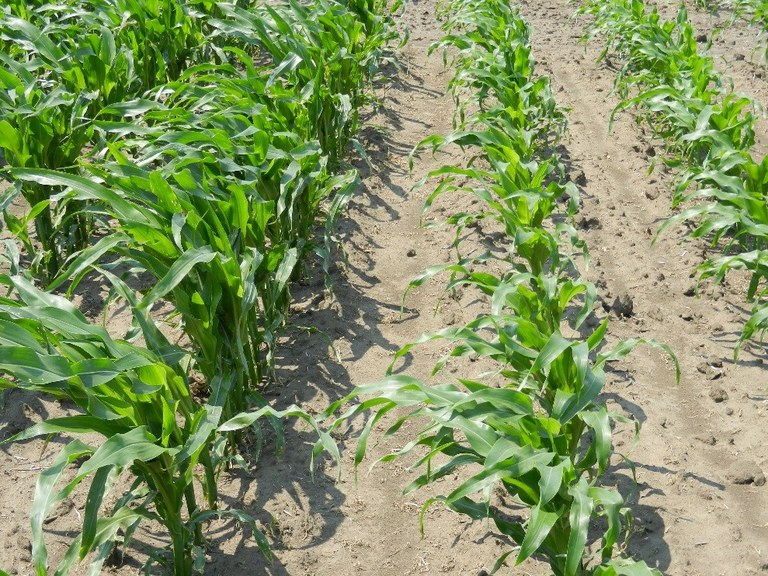
Corn response to starter P in Carrington, ND.
Spring Has Sprung and A New Cycle Is Starting at the CREC
It’s time to begin again. Each program at the CREC has been busy this winter completing projects and analyzing data from the past growing season. But as the daylight lengthens and the sunshine warms the soil it’s time to finish plans for #plant16.
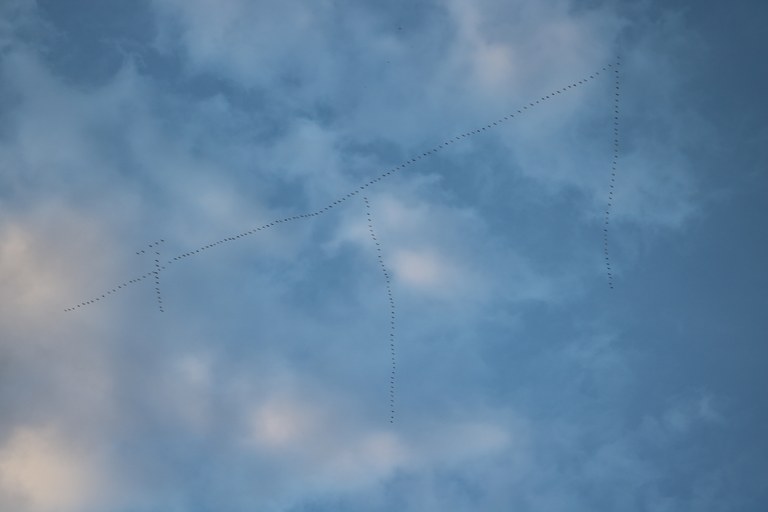
The agronomy scientists, specialists and technicians are busy collecting soil samples for nutrient analysis, packaging seed and finishing plans for the 300+ research trials that will be planted this spring. Meanwhile, the Seedstocks program is finalizing fertility plans and field seed placement.
The Northern Hardy Fruits Evaluation Project has been pruning plants and assessing winter damage.
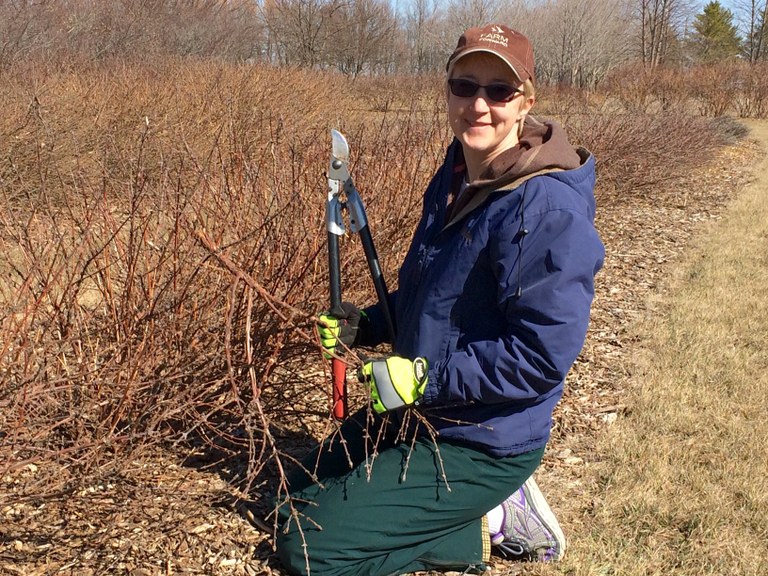
Spring is not just a time for plants around the Center, it’s also time for a new calf crop! Calving of our 100 head cow herd has begun and the next generation is looking good. The Livestock Unit technicians selflessly check the cows 24 hours a day until calving is done and are on deck to aid a difficult birth if necessary.
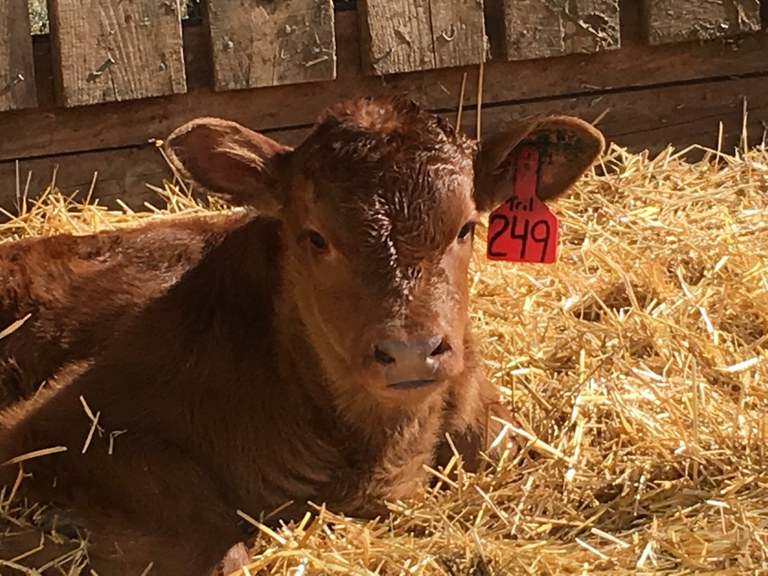
As we transition from winter to spring, we are also transitioning into a new year of Center Points. We appreciate you following us for the past 2 years and are excited to continue sharing for the next 52 weeks. We enjoy your feedback and welcome you to communicate with us anytime via phone (701) 652-2951 or email.
We wish you a productive spring and a prosperous #grow16 season.
Mary Berg
Area Extension Specialist
Livestock Environmental Management


